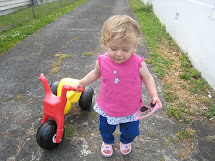
Though he’s not a big wheez in the sire business, Quest For Fame (GB) nevertheless notched a significant achievement on Saturday.
He is the sire of Sea Battle (pictured), winner of the G2 Crystal Mile at Moonee Valley, damsire of Hollows (by Thorn Park), winner of NZ’s first two-year-old stakes of the season, the Wellesley Stakes, and damsire of Maram (by Sahm, son of Mr Prospector), winner of the Breeders’ Cup Juvenile Fillies Turf at Santa Anita.
The one-time Juddmonte/Woodlands shuttler, now Darley senior citizen at their Cootamundra property, 21-year-old Quest For Fame has sired 38 stakeswinners worldwide, 31 of them in Australia. As a broodmare sire his figures are promising if not extraordinary, with 14 stakeswinners out of his daughters, representing 3.7% of starters to date. The horse is these days a tiny cog in the massive Dubai machine which experienced a few moments to savour at the Breeders’ Cup meeting at Santa Anita over the weekend. I wonder if Sheikh Mohammed knows he owns him?
The English Derby winner of 1990 and twice Breeders’ Cup Turf third placegetter, Quest For Fame has never been the height of fashion. His stout turf form on top of a dodgy set of front legs saw him enter stud in 1993 at a face value generous fee of $10,000. No one in Australia, of course, really wanted to breed to a marathon runner who mightn’t produce picture-perfect sale yearlings. His career peak fee grew to around $30,000 and he’s back down to $10,000 today for those who are interested.
In his first three seasons at Woodlands QFF served 67, 44 and 49. Ouch. Then when his first results started to roll, out came the risk-averse breeders, solidly backed by Woodlands’s numbers, giving the horse between 100 to 130 mares for the next seven seasons. Over that mid-career hump, his support in the last five years has dwindled to the point where he got only 22 in 2007 (possibly affected by EI restrictions).
I’ve always considered Quest For Fame a prepotent influence for poor front leg conformation, frequently light of bone and offset. There’s even a noticeable incidence in his second generation stock. This goes to explain his relatively modest career yearling sale average of about $55,000. By far and away the highest price ever paid for a QFF yearling was NZ$750,000 at Karaka in 2004, generated by the Pencarrow Stud/vendor – Rob McAnulty/purchaser combination, the horse in question becoming De Beers, winner of two from 21 including the G1 Rosehill Guineas.
As he went through a two-year-old sale which I did not attend, for just $15,000, Sea Battle doesn’t read like a sale ring standout. He was catalogued in Melbourne Premier as a yearling but didn’t make it. He is one of six stakeswinners bred on the QFF/Danehill cross, the first and most fondly remembered being the G1 filly Unworldly. The first half of Sea Battle’s career was spent in Sydney with Guy Walter but as he has matured he has grown a leg with Mark Kavanagh. Significantly, he is still an entire so somewhere, sometime a stud career beckons.
Sea Battle’s part-owner Peter Parker, an Australian, was a near-neighbour of mine in Matamata during the ‘80s but he is back on this side of the ditch these days. His involvement in breeding in NZ was not without controversy. He has raced some good horses in the past – Saxon Slew and Runyon are two I seem to recall.



















2 comments:
Steve,
Come accross your blog a few months ago and find it very entertaining and informative.
I'm a relative novice at 'this racing game' so find your comments on the shortcomings of some stallions fascinating.
I'd love to know your theory on the respective success rates of 'dirt' vs 'grass' track stallions in Australia.
I'm really also intriged about the relative lack of success in Australia of stallions such as Galileo. How can that stallion sire the top colts in England for a couple of years running and not be successful in Australia? What do you put this down to?
Cheers
Basil
By 'dirt vs grass' stallions I presume you mean stallions imported from the USA? If so, my unresearched gut feeling is that accomplished dirt runners have not fared particularly well on Australasian turf. I notice the stock of dirt-running sires often seem to like slow or heavy turf. That may have a lot to do with their stock's action inherited via selective breeding based on dirt track results down through the generations. Re your other question, if there were a simple answer someone would have made a fortune by now. Galileo is by no means alone in having an unbalanced record; Montjeu is another outstanding example (both by Sadler's Wells by the way). Remember Alzao and Night Shift? I've mused about Galileo several times previously on my blog because he is virtually a perfect thoroughbred. I think there are a number of factors which include the differences in training between Europe and Oz, the differences in track shapes and track conditions, the much greater emphasis on stamina in Europe compared with the lack of opportunities here, the compatability of the broodmare gene pool in Australia and the relative skills of European and Australasian breeders in understanding these horses. Having said all that I have most likely missed the most salient points. But the correct answer is that there's no simple answer.
Post a Comment